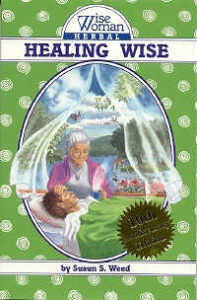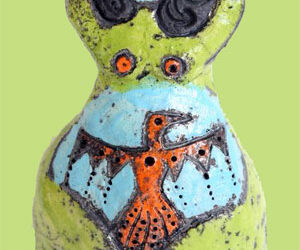I am starting to study herbs and wanted to know what “simples” are and why you prefer them over herbal combinations. Thanks for all you do!
Susun’s response:
What is a Simple?
A “simple” is one herb used at a time. A “simpler” is an herbalist who generally uses herbs one at a time, rather than in combinations.
Why Use Simples?
Most herbalists I have met — whether from China or Japan, Eastern or Western Europe, Australia or North America — use herbs in combinations. Simplers, like myself, don’t. Why?
Because I believe that herbal medicine is people’s medicine, I seek to make herbal medicine simple: as simple as one herb at a time. Because people worry about interactions between the drugs they take and herbs, I keep it simple: with simples, interactions are simple to observe, and simpler to avoid. Because empowerment in health care is difficult, I want to offer others easy, safe herbal remedies: and what could be easier, or safer, than a simple?
Simples Make Me Think
When I was just getting started with herbs, one thing that confounded me was the many choices I had when I began to match symptoms to the herbs that relieved them. If someone had a cough should I use garden sage or wild cherry bark or pine sap or mullein or coltsfoot (to name only a few of the many choices)? One way out of this dilemma was to use them all. I made many cough syrups that contained every anti-cough herb that I could collect. And they all worked.
As I got more sophisticated in my herbal usage, and especially after I completed a course on homeopathy, I began to see that each herb had a specific personality, a specific way of acting. I realized I couldn’t notice the individual actions of the herbs when they were combined.
It felt daring at first to use just one herb. Would wild cherry bark tincture all by itself be enough to quell that child’s cough? Yes! Would mullein infusion alone really reduce a person’s asthmatic and allergic reactions? Yes! Would sage soaked in honey for six weeks ease a sore throat? Yes! Each herb that I tried as a simple was successful. They all worked, not just together, but by themselves.
The more I used individual herbs the more I came to know them as individuals. The more I used simples, the simpler and more successful my remedies became. The more I used one herb at a time, the more I learned about how that herb worked, and didn’t work.
Simples Are Intimate
When we use one herb at a time, we come to know that herb, we become intimate with that herb. Just as we become intimate with each other by spending time one-on-one, tete-a-tete, simply together, we become closer to the herbs when we use them as simples.
Becoming intimate with an herb or a person helps us build trust. How reliable is the effect of this herb? When? How? Where does it fail? Using simples helps us build a web of green allies that we trust deeply. Simples help us feel more powerful. They help abate our fears, simply, safely.
One apprentice tinctured motherwort flowering tops weekly through its blooming period. She reported that the tinctures made from the younger flower stalks had a stronger effect on the uterus; while those made from the older flower stalks, when the plant was going to seed, had a stronger effect on the heart.
Simples Give Me Power
Using one herb at a time helps me feel more certain that my remedy has an active value, not just a placebo value. Using one plant at a time, and local ones at that, reassures me that my herbal medicine cannot be legislated away. Using one plant at a time allows me to build trust in my remedies. Using one plant at a time is a subversive act, a reclaiming of simple health care.
Combinations erode my power, activate my “victim persona,” and lead me to believe that herbal medicine is best left to the experts.
From Complex to Simple
Take the challenge! Use simples instead of complex formulae. Let’s rework some herbal remedies and get a sense of how simple it can be.
The anti-cancer formula Essiac contains Arctium lappa (burdock), Rheum palmatum (rhubarb), Ulmus fulva (slippery elm), and Rumex acetosella (sheep sorrel). Rhubarb root has no possible use against cancer; it is a purgative whose repeated use can “aggravate constipation.” Slippery elm bark also has no possible anti-cancer properties and has no doubt been added to counter some of the detrimental effects of the rhubarb. Sheep sorrel juice is so caustic that it has been used to burn off skin cancers, but it would likely do more harm to the kidneys than to any cancer if ingested regularly. Leaving us with a great anti-cancer simple: burdock root. One that I have found superbly effective in reversing dysplasias and precancerous conditions.
A John Lust formula for relief of coughs2 contains Agropyron repens (witch grass), Pimpinella anisum (aniseed), Glycyrrhiza glabra (licorice), Inula helenium (elecampane root), Pulmonaria officinalis (lungwort), Thymus species (thyme herb), (murillo bark) 3, Chondrus crispus (irish moss), Lobelia inflata (lobelia herb). Witch grass has little or no effect on coughs; it is an emollient diuretic whose dismissal from this group would leave no hole. Anise seeds are also not known to have an anti-pertussive effect; although they do taste good, we can do without them. Lobelia can bring more oxygen to the blood, but is certainly not an herb I would ever add to a cough mixture, so I will leave it out here. Licorice is a demulcent expectorant that can be most helpful for those with a dry cough; however, I do use it for a variety of reasons, among them its exotic origins and its cloyingly sweet taste. Lungwort is, as its name implies, a pectoral, but its effect is rather mild, and its place in the Boraginaceae family gives me pause. How much pyrrolizidine alkaloid might it contain? Thyme, and its more common anti-cough cousin garden sage, contains essential oils that could both quiet a cough and counter infection in the throat. A strong tea or a tincture of either could be our simple. Irish moss is a specific to soothe coughs and a nutritive in addition, would also make an excellent simple. But it is elecampane that I would crown. It is not only a specific to curb coughing, it counters infection well, and tonifies lung tissues. Several small doses of a tincture of elecampane root should quiet a cough in a few hours.
Simples are fun. Give them a try.
Footnotes:
1 Among the many variables, I have especially noticed that the tinctures that I make with fresh plants are many times more effective than tinctures made from dried plants. My elders tell me that preparations of common plants growing in uncommon places will be stronger as well. Many herbalists are aware of certain areas of their land that nurture plants that are particularly potent medicines.
2 John Lust. The Herb Book. 1974. Bantam.
3 Note that this formula, as is frequently the case, contains an “exotic” herb which Mr. Lust does not include in the 500+ herbs in his book, nor does he give us a botanical name for the plant, leaving us literally unable to prepare his formula as presented.
photos: Wise Woman Spiral ©iStockphoto.com / Chuck Spidell | Serpent Goddess ©Selina di Girolamo












Complementary Medicine – Alternate medicine is used along with,
or in addition to, conventional medical care.